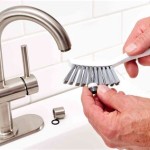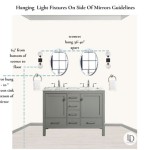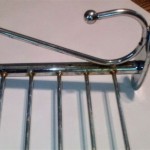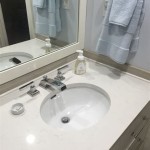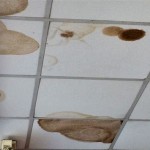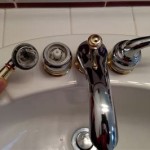How To Get Rid Of Fleas In The Bathroom
Fleas are small, wingless insects known for their parasitic behavior, primarily feeding on the blood of mammals and birds. While commonly associated with pets like cats and dogs, fleas can infest various areas of a home, including the bathroom. Their presence in a bathroom can be particularly disconcerting due to the room's function and the potential for human contact. Effective flea elimination requires a comprehensive approach, addressing the fleas themselves, their eggs, and the environment conducive to their survival.
The presence of fleas in a bathroom usually indicates an infestation is present elsewhere in the home, with the bathroom serving as a temporary haven or a transit point. Fleas do not generally thrive in bathrooms due to the lack of suitable hosts and the generally hard, non-porous surfaces. However, they can be transported into the room by pets, humans, or even rodents, finding temporary refuge in cracks, crevices, and damp areas. Understanding the root cause of the infestation is critical for successful eradication.
Identifying the presence of fleas in a bathroom is the first step towards effective treatment. Fleas are small, dark-colored insects, typically about 1/8 inch long. They are highly mobile and can jump considerable distances, making them difficult to catch. Signs of flea infestation in a bathroom may include:
- Seeing fleas jumping on the floor, especially near the baseboards or around areas where pets frequent.
- Experiencing bites on the ankles or legs after spending time in the bathroom. These bites are typically small, red, and intensely itchy.
- Finding “flea dirt,” which is flea excrement that resembles dark specks of pepper. This is often found in areas where fleas congregate.
Flea dirt can be distinguished from regular dirt by placing it on a damp paper towel. Flea dirt will dissolve and leave a reddish-brown stain, indicating the presence of digested blood.
Once fleas have been identified in the bathroom, a strategic plan for elimination must be implemented. This plan incorporates cleaning, treatment of the bathroom environment, and addressing the source of the infestation elsewhere in the home. The following key points provide a framework for successfully eradicating fleas from a bathroom.
Thorough Cleaning and Vacuuming
The first line of defense against fleas in the bathroom is thorough cleaning. Vacuuming is particularly crucial as it removes adult fleas, flea eggs, and flea larvae from the environment. The bathroom floor, especially along baseboards, cracks, and crevices, should be vacuumed meticulously. Use a vacuum cleaner with a strong suction and a beater bar to effectively dislodge fleas and their eggs from carpets or rugs, if present. Following vacuuming, the vacuum bag should be immediately sealed in a plastic bag and disposed of outdoors to prevent the fleas from escaping and re-infesting the area.
In addition to vacuuming, all surfaces in the bathroom should be thoroughly cleaned with soap and water. This includes the floor, counters, sinks, toilets, and any other surfaces that may harbor fleas or their eggs. Pay close attention to areas that are damp or shaded, as these are often preferred by fleas. Use a disinfectant cleaner to kill any remaining fleas and to eliminate any potential bacteria or viruses that may be present. Mopping the floor with a solution of bleach and water (a ratio of 1 part bleach to 10 parts water) can also be effective in killing fleas and their eggs. However, caution must be exercised when using bleach, ensuring proper ventilation and avoiding contact with skin or eyes.
Textiles in the bathroom, such as bath mats and rugs, should be washed in hot water and dried on the highest heat setting. This will kill any fleas or eggs that may be present in the fabric. If the textiles are not washable, they should be vacuumed thoroughly and then subjected to a flea-killing spray specifically designed for fabrics. Before using any chemical treatment, it is important to test it on a small, inconspicuous area to ensure that it does not damage or discolor the material.
Emptying and cleaning the bathroom trash can is also essential. Fleas may seek refuge in the trash can, especially if it contains organic matter that can provide them with sustenance. The trash can should be emptied regularly and cleaned with a disinfectant cleaner to eliminate any potential flea breeding grounds.
Maintaining a clean and dry bathroom environment is crucial for preventing future flea infestations. Regularly cleaning the bathroom and addressing any sources of moisture, such as leaky faucets or pipes, can help to create an environment that is less attractive to fleas. Good ventilation can also help to reduce humidity levels, which can further discourage flea infestations.
Application of Insecticides and Flea Control Products
Following thorough cleaning, the application of insecticides and flea control products is often necessary to eliminate any remaining fleas and to prevent re-infestation. Various types of insecticides are available for controlling fleas, including sprays, powders, and foggers. The choice of insecticide will depend on the severity of the infestation, the type of surfaces being treated, and any safety concerns related to pets or humans.
Flea sprays are a common and effective method of controlling fleas in the bathroom. These sprays typically contain insecticides that kill fleas on contact and provide residual protection for several weeks. When using a flea spray, it is important to follow the manufacturer's instructions carefully. The spray should be applied evenly to all surfaces in the bathroom, paying particular attention to cracks, crevices, baseboards, and other areas where fleas may hide. Avoid spraying directly on pets or humans, and ensure that the bathroom is well-ventilated during and after application.
Flea powders can be used in conjunction with flea sprays to provide additional control. These powders typically contain insecticides that kill fleas and prevent them from reproducing. Flea powders are particularly useful for treating carpets, rugs, and other fabrics that may harbor fleas. The powder should be sprinkled evenly over the surface being treated and then worked into the fibers with a broom or brush. After a few hours, the powder should be vacuumed up to remove any dead fleas and eggs.
Flea foggers, also known as “bug bombs,” are devices that release a cloud of insecticide into the air. These foggers can be effective for treating large areas quickly, but they should be used with caution. Before using a flea fogger, it is important to remove all pets and humans from the area and to cover or remove any food, dishes, or utensils. The fogger should be placed in the center of the room and activated according to the manufacturer's instructions. After the fogger has been activated, the area should be left undisturbed for several hours to allow the insecticide to settle. Once the treatment is complete, the area should be thoroughly ventilated before re-entry.
In addition to traditional insecticides, there are also several natural and organic flea control products available. These products typically contain ingredients such as diatomaceous earth, cedarwood oil, or pyrethrum, which are effective at killing fleas without the use of harsh chemicals. Diatomaceous earth is a natural powder made from fossilized algae that dehydrates and kills fleas. Cedarwood oil and pyrethrum are natural insecticides that can kill fleas on contact. When using natural flea control products, it is important to follow the manufacturer's instructions carefully and to choose products that are specifically designed for flea control.
It is crucial to read and understand the instructions and warnings associated with any insecticide product. Improper use can be harmful to humans, pets, and the environment. Always wear protective gear, such as gloves and a mask, when applying insecticides. Avoid spraying or applying insecticides directly on pets or humans, and ensure that the treated area is well-ventilated. Store insecticides in a safe place, out of reach of children and pets.
Addressing the Root Source of the Infestation
Treating the bathroom is only a temporary solution if the root source of the infestation is not addressed. In most cases, fleas are brought into the bathroom by pets that are infested with fleas. Therefore, the pet should be treated for fleas concurrently with the bathroom treatment. Consult a veterinarian for the best flea treatment options for the pet. These may include topical treatments, oral medications, or flea collars. Regularly grooming the pet with a flea comb can also help to remove fleas and eggs from its coat. It is important to treat all pets in the household, even if they do not appear to be infested, as fleas can easily spread from one animal to another.
Other potential sources of flea infestations include rodents and wildlife. If there is evidence of rodents or wildlife in or around the home, steps should be taken to eliminate them. This may involve setting traps, sealing up entry points, and removing any food or water sources that may be attracting them. A professional pest control service may be required to effectively eliminate rodents and wildlife from the home. Once the rodents or wildlife have been eliminated, the areas that they frequented should be thoroughly cleaned and treated with insecticides to kill any remaining fleas.
The yard and surrounding areas should also be inspected for potential flea breeding grounds. Fleas thrive in areas that are shaded, moist, and contain organic matter. Piles of leaves, grass clippings, and wood shavings can provide ideal breeding grounds for fleas. These areas should be cleaned up and maintained to reduce the risk of flea infestations. Trimming bushes and shrubs can also help to reduce shade and moisture, making the environment less attractive to fleas.
Indoor areas frequented by pets, such as carpets, rugs, and furniture, should be thoroughly cleaned and treated with insecticides. Vacuuming these areas regularly can help to remove fleas and their eggs. Steam cleaning carpets and rugs can also be effective in killing fleas. If the infestation is severe, it may be necessary to hire a professional pest control service to treat the entire home.
Regularly washing pet bedding and toys in hot water can also help to prevent flea infestations. Pet bedding should be washed at least once a week to remove any fleas or eggs that may be present. Pet toys should also be washed regularly, especially if they are used outdoors. Replacing pet bedding and toys periodically can also help to reduce the risk of flea infestations.
By addressing the root source of the infestation, along with cleaning and treating the bathroom, one can significantly reduce the risk of a repeat infestation. Consistent monitoring and preventative measures are essential for long-term flea control.

Springtails Aka Snow Fleas How To Get Rid Of Them

How To Get Rid Of Snow Fleas In Your Home 12 Tomatoes

Snow Fleas Or Springtails Do They Bite How To Get Rid Of Them

How To Get Rid Of Drain Flies Rt Olson Plumbing

How To Get Rid Of Springtails In The Bathroom What S That Bug

How To Rid Of Drain Flies Forbes Home

How To Get Rid Of Fleas Reviews By Wirecutter
Why Might Hundreds Of Fleas Be Accumulating Around A Downstairs Bathtub Drain Quora

How To Give Your Cat A Flea Bath When S Water Adams

How To Get Rid Of Fleas Reviews By Wirecutter
Related Posts
